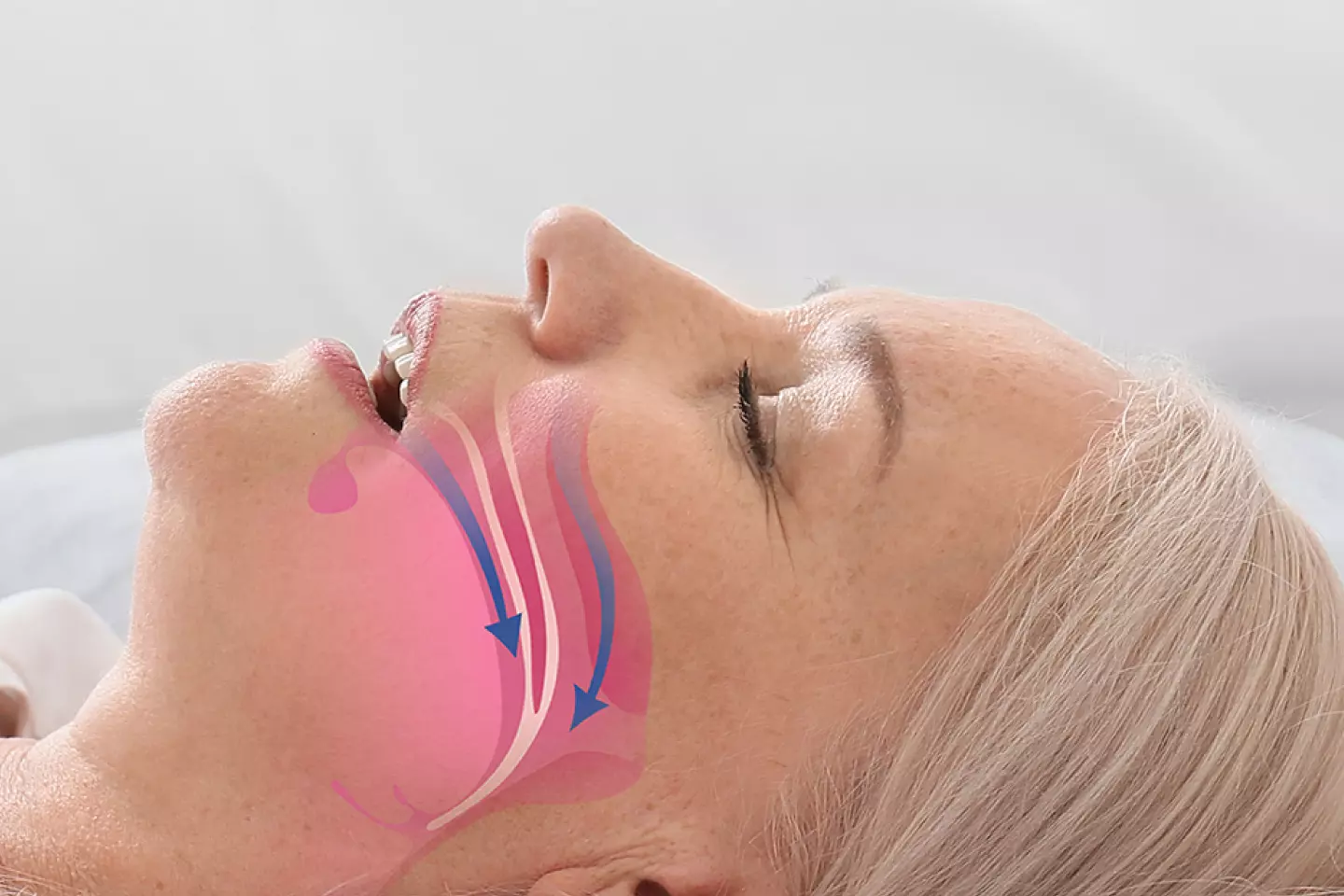Opening Hours
Monday: 7:00 a.m. - 2:30 p.m.
Tuesday: 7:00 a.m. - 2:30 p.m.
Wednesday: Closed
Thursday: 7:00 a.m.- 2:30 p.m.
Friday: 7:00 a.m. - 2:30 p.m.
Saturday: Closed
Sunday: Closed
Sleep Apnea

Sleep apnea is a type of sleep disorder characterized by irregular breathing patterns while sleeping. Individuals with sleep apnea experience frequent interruptions or pauses in breathing during sleep, which can reduce sleep quality even if they remain unaware of these disruptions. At Star Dental Institute, we focus on improving your sleep and overall health with personalized solutions, including Consult & X-ray, to accurately assess and address your condition. Our expert team ensures each treatment plan is tailored to your unique needs, helping you achieve better rest and wellness.
Types of Sleep Apnea
Sleep apnea is classified into several categories based on the source of breathing disturbances.
Obstructive sleep apnea (OSA) occurs when the airway at the back of the throat becomes constricted or obstructed during sleep, leading to snoring as air cannot pass normally. Individuals typically awaken and take multiple gasps or deep breaths, often accompanied by noises like snorting or choking, in reaction to an airway blockage. The most prevalent type of sleep apnea is obstructive sleep apnea, and it is believed that 10% to 30% of individuals are affected throughout the United States; however, it is frequently misdiagnosed.
Central sleep apnea (CSA): This is characterized by a breakdown in communication between the brain and the muscles that govern breathing. Consequently, breathing may become shallower, and there may be brief pauses. Compared to obstructive sleep apnea, the prevalence of central sleep apnea is minimal, with an estimated impact on fewer than 1% of the population.
Symptoms of Obstructive Sleep Apnea
The following symptoms characterize obstructive sleep apnea:
- Excessive drowsiness during the day
- Loud snoring frequently interrupted by gasping or choking sounds
- Morning headaches lasting for several hours after waking up
- When you wake up, you have a dry mouth.
- Sleep disturbances, including periods of waking during the night
- Increased frequency of getting out of bed to urinate
- Irritation and mood swings
- Decreased concentration
Specific symptoms of obstructive sleep apnea may not be immediately evident to the individual affected by the condition. For instance, irregular breathing and snoring may go unnoticed until a bed partner observes them.
Due to the possibility of overlapping symptoms with other health issues, self-diagnosis of obstructive sleep apnea is challenging. At Star Dental Institute, we emphasize the importance of seeking professional guidance to diagnose obstructive sleep apnea accurately.
Sleep Study for Diagnosis
A sleep apnea examination often begins with a thorough review of a person's symptoms and overall health, along with a physical exam. This initial assessment aims to identify symptoms of sleep apnea and recognize potential risks that contribute to the condition.
To confirm whether an individual has obstructive or central sleep apnea, a sleep study is essential. Polysomnography, conducted overnight at a specialized sleep laboratory, is considered the most reliable form of sleep research. Multiple sensors measure various parameters during polysomnography, including breathing, awakenings, oxygen levels, muscle activity, sleep phases, and other elements critical to sleep assessment.
While polysomnography for OSA may require one or two visits to a sleep clinic, individuals with suspected severe obstructive sleep apnea may opt for at-home sleep studies. Although taking a sleep apnea test at home is more convenient, a healthcare professional must still analyze the findings. Home testing is not conducted for central sleep apnea due to its more complex diagnostic nature.
Treatment Approaches
Positive airway pressure (PAP) therapy stands out as a viable treatment option for people suffering from obstructive sleep apnea. PAP therapy involves pressurized air, delivered through a machine via a hose and a mask placed on the face to maintain an open airway during sleep.
Continuous Positive Airway Pressure (CPAP)
Continuous positive airway pressure (CPAP) is a common form of PAP treatment that utilizes a device to deliver a constant stream of air at a consistent pressure level. In addition to CPAP, other PAP devices, such as bi-level positive airway pressure (BiPAP) and auto-titrating positive airway pressure (APAP), offer variability in air pressure to cater to specific needs.
Oral Appliances
Sleep apnea appliances, also called oral appliances, are designed to treat obstructive sleep apnea (OSA) by repositioning the lower jaw and tongue during sleep, thereby preventing airway blockage. Mandibular Advancement Devices (MADs), resembling mouthguards, move the lower jaw forward. On the other hand, tongue-retaining devices (TRDs) retain the tongue in a forward position, preventing it from collapsing into the airway. Combinations of MADs and TRDs are also available as combination treatment devices.
If you or a loved one is grappling with sleep apnea, don't let it compromise your quality of life. At Star Dental Institute, we specialize in comprehensive sleep solutions tailored to your unique needs. Whether it’s oral appliances for snoring or advanced treatments for sleep apnea, our personalized approach ensures effective results. Our expert team is dedicated to enhancing your sleep quality, ensuring you wake up refreshed and revitalized. To get started with your tailored plan, book an appointment with Star Dental Institute today and take the first step toward better sleep.
Schedule Your Visit!
*First Name
*Last Name
Your Email
*Phone Number
*Preferred Appointment Date & Time
*Comments
(Requested time is not final until you receive confirmation from our office) I allow this website to store my submission so they can respond to my inquiry. By providing your phone number, you agree to receive informational text messages from Star Dental Institute.



